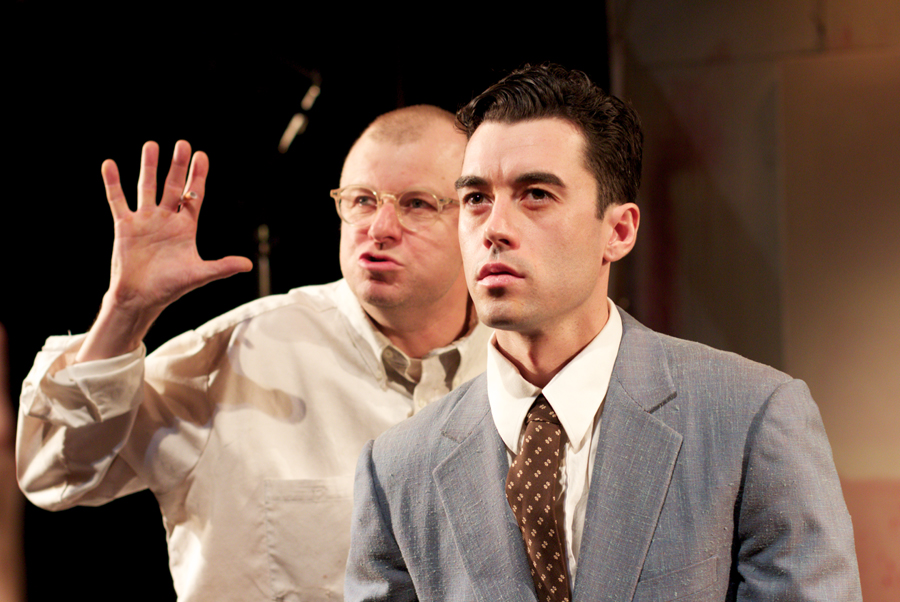“What do you see?” repeats Mark Rothko to his assistant in an early scene of the Segal Centre’s RED, a Montreal production of the hit Broadway play by John Logan.
Lead actor Randy Hughson’s shrewd Rothko may as well be directing that question at us, his mantra imploring the audience to gaze deeply into the canvases that comprise the stage’s backdrop.
In translating the famous abstract impressionist’s work and life to theatre, careful attention is paid to the stage, so that the transfer of medium from painting to production remains faithful to Rothko’s artistic statement. The industrial-looking stage mimics the gym that he worked in, complete with towering works in progress and a wooden floor that the actors pace and splatter with paint. Rothko and his young assistant Ken (Jesse Aaron Dwyre) wheel the gigantic canvases around, adjusting the lights that illuminate their bodies in order to examine themselves. The actors’ in-scene manipulation of set pieces has them additionally serve as studio props, which helps create an immersive scene. The accuracy of the set, including the paintings, adds to this aim, too.
“Our building techniques, the way we make things, the lighting instruments that we’re using are all very authentic,” says Jonathan Rondeau, the Segal Centre’s director of production.

Authenticity is a concept Rothko himself struggled with throughout his career. RED focuses on a critical period in his life when he was commissioned to paint a series of murals for the Four Seasons restaurant in the Seagram Building in New York City, a project whose artistic integrity Ken eventually challenges. Ken is initially wide-eyed, reacting timidly to Rothko’s brash lectures and abrupt, pseudo-intellectual musings. Later on, however, their dynamic changes.
“[Ken] starts to infiltrate the relationship Rothko has with the paintings,” says Dwyre. “That’s when the show starts to break open, and we get revelations.” As Ken critiques the Rothkos from across a generation gap—according to Dwyre, he’s even more new-school than Rothko was at the time—RED explores the meaning and value of art.
The value of a Rothko is currently a hot topic in the art world. Art collectors have been criticized for turning Rothko’s paintings into commodities that preserve wealth, rather than visual statements for the enjoyment of everyone. Two weeks ago, Rothko’s No. 1 (Royal Red and Blue) sold for $75 million at the Sotheby’s auction house, the second-highest ever paid for one of his paintings. Orange, Red, Yellow sold for nearly $87 million earlier this year.
This issue is also examined in David Cronenberg’s 2012 film Cosmopolis, in which a predatory capitalist, played by Robert Pattison, expresses an interest in buying the entire Rothko Chapel, and is disappointed when his art dealer explains that it’s not for sale. The film comments on the irony of Rothko creating his Chapel as a public, nondenominational space, where anyone could see his work—a response to the privatization of his artwork that he considered the Seagram murals to be a part of. As RED shows, the inherent exclusivity of the Four Season’s space was the main reason the commission was ultimately turned down.
To continue the tradition of democratization of Rothko’s work, the Segal Centre will hold a free education session at McGill next week. The production may receive a fortuitious boost by two events: the Musée Des Beaux-Arts’ impressionism exhibit, and the much-hyped film, Skyfall, written by RED’s Logan—events that the Segal Centre hopes will encourage Montreal audiences to experience Rothko at a price that won’t put them in the red.
RED runs from Nov. 29 to Dec. 16, 2012 at the Segal Centre (5170 Chemin de la Croix-Ste-Catherine). Student admission $24.







